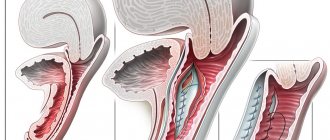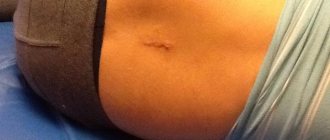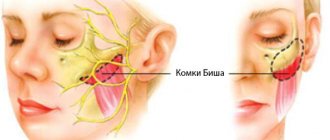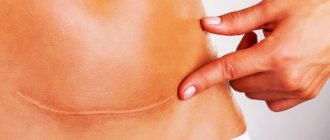Surgery to remove varicose veins on the legs (phlebectomy of the veins of the lower extremities) is one of the oldest forms of surgical treatment of varicose veins of the lower extremities. The earliest description of the procedure was written by Aulus Cornelius Celsus, a Roman medical historian. The first description of phlebectomy using hooks was published in 1545. Modern combined phlebectomy was developed around 1956 by a Swiss dermatologist named Robert Müller.
Microphlebectomy is the medical term used for the procedure of removing an enlarged superficial vein through a tiny incision in the leg. The incisions are so small that they often do not require stitches to close them. A small piece of masking tape is usually enough to cover it. The procedure also helps eliminate pain and improves the appearance of the legs. Surgery for varicose veins of the lower extremities can be used in combination with other procedures such as EVLT (endovenous laser therapy) and sclerotherapy.
Phlebologists at our center perform surgery on the legs for varicose veins, as suggested by the German professor Varadi, who developed his own instruments for performing the operation and formulated the basic postulates of modern microphlebectomy through a puncture. This method has excellent cosmetic results, is painless and does not require hospitalization. At the Innovative Vascular Center, this operation on veins for varicose veins is performed perfectly, and the price of the intervention is affordable for everyone.
Very cosmetic
In most Russian hospitals, varicose veins on the legs are removed, both through a large incision in the groin (crossectomy) and through large incisions on the legs according to Narat or Linton. The consequences of such a combined phlebectomy are not satisfactory for most patients. Our technology involves minimal intervention through skin punctures that leave virtually no scars. The dilated vein is “evaporated” with a laser without incisions. Varicose veins and nodes are eliminated with microphlebetomy and Foam-Form sclerotherapy. The use of a minimally invasive technique involves significantly less tissue trauma than “classical” combined phlebectomy; patient reviews of the postoperative period are very good.
What do we offer today instead of classical surgical treatment of varicose veins?
Everything changed about 20 years ago with the advent of the first successful attempts at endovasal thermoobliteration. This was a significant technological breakthrough that radically changed phlebology. The initial clinical experience with the use of thermoobliteration was on the verge of a medical experiment. Any innovative technology goes through this stage. During that period of the first steps and development of the thermoobliteration technique, one could talk about its competition with classical surgery.
Laser radial light guide
After the appearance of radial light guides for laser coagulation in 2008, there could no longer be any talk of a significant opposition between combined phlebectomy (in any form) and endovasal thermoobliteration. What are the benefits of endovascular varicose vein surgery:
- Fine manipulation control via ultrasound imaging
- Minimally invasive, only skin punctures.
- Mild anesthesia in the form of local tumescent anesthesia.
- Full outpatient service for all procedures.
- Good patient tolerance of both the manipulation and the postoperative period.
Under local anesthesia
The operation to remove veins for varicose veins is performed under local anesthesia, which allows you to fully numb the surgical field with a weak solution of local anesthetic - novocaine or lidocaine. The result of surgery should be the elimination of varicose veins with an excellent aesthetic result. The meaning of aesthetic phlebectomy is to remove varicose veins through punctures, but not skin incisions under local anesthesia. Only subtle scars remain, which are practically invisible after 3-6 months. Phlebologists at the Innovative Vascular Center have mastered this technique to perfection.
Surgical treatment of varicose veins of the lower extremities, why did we completely abandon it?
As mentioned above, classical surgical treatment of varicose veins is actively used in European medical practice, including Moscow, the Moscow region and other Russian cities.
To the question: why is this, and why use horses when there are already good cars? By using a century-old operation, we lose the following advantages of innovation:
- No ultrasound imaging available. The intervention is controlled through the surgical wound; to improve visibility, it is necessary to enlarge the incision.
- Surgical trauma increases significantly. This not only increases the rehabilitation period, but also affects possible complications and side effects.
- The effectiveness of treatment decreases.
- In most cases, separation of the treating doctor from ultrasound diagnostics.
- Trauma, sometimes significant, at the sites of incisions and phleboextraction sites.
- Pseudo-radicalism. As practice shows, with phlebectomy, with very rare exceptions, significantly fewer varicose veins are removed than using modern techniques.
In the practice of the Moscow City Phlebological Center, we use only the best modern techniques and combined phlebectomy has long been out of place there.
Without hospitalization and sick leave
When treating varicose veins in our clinic, hospitalization is not necessary. Complex cases of varicose veins are treated by combining laser coagulation and miniphlebotomy. Minimal trauma, as well as a low risk of intervention, allow this operation to be performed in a day hospital. After modern miniphlebectomy, the patient can be sent home half an hour after the intervention. In the postoperative period, you need to lead an active lifestyle, active walking is encouraged. Temporary incapacity for work usually lasts no more than 7 days, then it is possible to begin work.
Choosing a clinic for the treatment of varicose veins and surgery
Conservative and surgical treatment of varicose veins is carried out today in many public and private medical centers. The clinic to which you entrust your health should have a serious reputation and experienced doctors. At the TN-Clinic, treatment of varicose veins is carried out by highly qualified surgeons who are proficient in various techniques of vein surgery.
In high-tech operating rooms, classical phlebectomy, mini-phlebectomy, sclerotherapy (in various variants), etc. are performed. It is important that the choice of method by the doctor is always strictly justified by the clinical picture and is discussed with the patient, the pros and cons of the methods, the risks of consequences and possible complications are explained. For example, in a clinic for the treatment of varicose veins
It is not always advisable to use minimally invasive (“easy”) techniques. Contraindications for this: severe varicose veins, thrombophlebitis, blood clotting disorders and others. In this case, a combined operation is performed to achieve a good result.
For doctors at a clinic treating varicose veins
, the results of therapy and the condition of patients are very important - both in the early and late postoperative period. That is why our surgeons are always in touch and ready to answer any questions of interest to operated patients.
Advice from a phlebologist
Despite the choice of surgical techniques for removing varicose veins and the possibility of minor outpatient interventions, any operation requires a rehabilitation period and careful attention to one’s health. Therefore, from the very first appointment until the end of medical supervision after the operation, you must follow all the recommendations of the phlebologist.
:
- first of all, wearing medical jersey; special underwear is worn immediately after surgery, after phlebectomy. The first two days, as a rule, it is recommended to wear knitwear around the clock. Next, daily wear for 3-6 weeks (according to the doctor’s indications);
- after endovasal interventions (laser therapy), which are not combined with any other methods, compression therapy is not necessary; in the case of a combined operation, wearing is required for a month or two. For the first two days, the knitwear is left overnight.
- other recommendations of the phlebologist
relate to physical activity and a healthy lifestyle, control of excess weight and changes in working conditions if it involves prolonged static load on the legs. You need to walk every day for 40-60 minutes. You can add special exercises to your daily walks to strengthen your veins and blood vessels. During the first two months after surgery, perform all physical exercises wearing compression stockings. Remove squats and weight lifting (dumbbells, barbells) from the complex. Also, do not put a lot of stress on the lower abdomen.
In general, the most important condition for successful correction of varicose veins is the cooperation of the doctor and the patient. Trusting your doctor, following all his recommendations and subsequently following the rules of prevention helps to maintain the health and beauty of your feet.
Operations phlebectomy, miniphlebectomy, at TN-Clinic
- carried out by qualified surgeons-phlebologists, Ph.D. having extensive practical experience in carrying out such operations. All manipulations are carried out under ultrasound control, in accordance with the standards and recommendations of the World Health Organization;
— the procedure takes place in absolutely sterile operating room conditions, which eliminates any possibility of complications;
— after the manipulations, the patient spends some time in a comfortable day hospital under the supervision of nurses;
— upon returning home, TN-Clinic patients are in touch with the doctor who operated on them until complete recovery
Preparing for treatment
Before surgery for varicose veins in the legs, patients should stop taking aspirin or aspirin-related medications for a week before the procedure. They should not eat or drink after midnight on the day of surgery. You should not apply any moisturizers or tanning lotions on the day of your procedure. The patient should arrive at the surgery center approximately one and a half hours before the procedure. He is asked to walk around the room or corridor for about 20 minutes so that the subcutaneous nodes appear. The surgeon marks the contours of varicose conglomerates with a marker. Ultrasound scanning is performed for preoperative marking.
Indications for the operation:
- Visible deformation of the venous wall. The veins expand, become tortuous, and knots form on them.
- The presence of persistent circulatory disorders in the lower extremities - swelling, pain in the legs, cramps, heaviness, a feeling of fullness.
- The presence of signs of impaired tissue trophism - the appearance of pigmentation, thickening of the skin and subcutaneous tissue, cyanosis of the legs, itching. If the veins are not removed in this case, trophic ulcers and eczema will develop, which are very difficult to completely cure.
- Some types of thrombophlebitis.
How is the treatment carried out?
Skin punctures are made with a needle at points according to the preoperative markings. The varicose node must be carefully isolated along the vein with a special hook, and then it is removed by pulling it out through a small puncture. The video shows an operation to remove varicose veins through micropunctures on the legs. Sutures are not required if the doctor uses minimal incisions (1-3 mm) and good postoperative compression. This eliminates the consequences in the form of noticeable scars and seals in the incision area. Experienced surgeons remove extensive venous networks in both legs in one session lasting from 60 to 120 minutes. Additional sclerotherapy for residual varix and telangiectasia allows you to remove small vessels after phlebectomy. With laser phlebectomy, small punctures are made, and the removal of the vein in small sections minimizes the appearance of blood clots and promotes the best cosmetic effect. This method requires special training of the surgeon. After all extended varicose segments have been removed, a compression bandage must be applied.
Surgical treatment (combined phlebectomy) - surgical technique
Modern combined phlebectomy is performed under general anesthesia or epidural anesthesia. After processing the surgical field, ligation and intersection of the main saphenous vein (great or small) in the area of the sapheno-femoral or saphenopopliteal anastomosis is performed, that is, crossectomy. To access these areas of the venous vessels, incisions are used along the inguinal or popliteal folds. The length of the incisions varies from one and a half to several centimeters.
Stages of classical phlebectomy
Stripping is performed, removing the trunks of the saphenous veins using a special probe, followed by removal of the tributaries of the main veins. After control of hemostasis, aseptic dressings are applied, compression garments or bandages are put on.
Possible complications of phlebectomy
Most minor complications are not dangerous and resolve spontaneously. Varicose veins only recur if the source of venous reflux is not removed using endovenous thermal ablation techniques. Laser phlebectomy involves a combination of methods leading to complete recovery.
What can happen after phlebectomy of the great saphenous vein?
- Bleeding, hematoma formation on the thigh (the formation of bruises depends on the correct selection of compression garments),
- Skin pigmentation along the treated venous trunk.
- Other complications, such as accidental nerve damage with sensory impairment or infection, are rare.
- Sometimes skin necrosis may occur.
- Keloids and hypertrophic scars usually do not occur due to the minimal size of the incisions.
- Deep venous thrombosis is observed in isolated cases, since compression stockings are effective methods of prevention.
Phlebectomy: an operation that helps cope with varicose veins!
Phlebectomy is an operation prescribed when less radical methods of treating varicose veins have exhausted themselves. They can no longer prevent further development of the disease. In such situations, the risk of life-threatening complications such as thrombosis or trophic ulcers increases.
The stronger the changes, the more difficult it is to cope with them. In such a situation, the operation cannot be postponed. Phlebectomy involves surgical removal of a section of a vein damaged by disease. Thus, blood flow is normalized. Since only the saphenous veins, which carry only one tenth of the total blood volume, are removed, this procedure is generally safe for the circulatory system.
How is phlebectomy of the lower extremities performed?
Phlebectomy of the lower extremities is performed using specific probes. A blood vessel damaged by varicose veins is ligated and crossed at the point where it flows into a deep vein. A guide probe is then inserted into the vessel through the incisions, and this section is then pulled out.
All work is carried out through miniature incisions followed by cosmetic stitches. Traces after the operation thus remain almost invisible. Sometimes stitches are not applied at all, the edges of the incisions are glued together with special strips of adhesive.
Observation after treatment
Regular classic phlebectomy is rarely needed by patients, as it usually requires an overnight stay in the hospital and 2 to 8 weeks at home. After vein removal in the lower extremities in our center, the patient is allowed to exercise, but should not drive a car for at least a day, since distal motor function may be impaired due to prolonged anesthesia, especially after anesthesia in the popliteal region. The patient is advised to walk for about 10-15 minutes before leaving the clinic.
In the future, you will need to take diosmin medications (detralex); it is not recommended to stand in one place for a long time for 2 weeks. This helps minimize the risk of blood clots forming in the deep veins of the leg. A compression bandage prevents post-operative bleeding and reduces the likelihood of pain, bruising and other complications. The bandages are removed 3-7 days after surgery, but the compression stocking should be worn for an additional 2-4 weeks to minimize bruising and swelling. The wearing time depends on the size of the veins removed and the degree of reflux treatment. Stockings can be removed when taking a shower.
Additional sclerotherapy should be postponed for several weeks and done after the postoperative swelling has disappeared. Many spider veins can spontaneously regress and also disappear spontaneously after the varicose veins are removed through outpatient phlebectomy. Patients should avoid early sun exposure because hyperpigmentation may appear at the puncture or incision site.
The patient is advised to monitor for redness, swelling, suppuration, fever and other signs of infection. If these signs appear, you should immediately consult a doctor.
Vein removal operations under compulsory medical insurance
Is vein removal necessary for varicose veins? This question is asked by everyone, without exception, who has encountered problems with varicose veins in their lives. In the 21st century, there is a lot of encouraging information to be gleaned from open sources, but how competent are they? Is it possible to live with varicose veins? How to weigh the pros and cons and learn more about the disease and its treatment? Continue, hoping for something “maybe”, to suffer from varicose veins? Or take advantage of free help by visiting a phlebologist at the Vein Treatment Clinic at the Russian Scientific Center for Surgery named after. Petrovsky? The choice is obvious, but some people still have troubling doubts. And time, so necessary, is running out. Along with health. Information is an important component for everyone who is still thinking about it. Here is a short list of answers to questions you may be asking yourself:
Should I remove veins or not? Maybe it will “dissolve” this way?
If varicose veins are diagnosed, they will definitely progress, this is the specificity of the disease. Timely contact with a specialist will help to significantly slow down the degradation of veins. It is possible to avoid vein removal if you consult a phlebologist at an early stage of the disease, at the first unpleasant symptoms (pain in the legs, burning, etc.). You must remember that varicose veins initially do not manifest themselves in any way, and only an experienced phlebologist can diagnose them. using the latest diagnostic equipment. And, by the way, you can get a consultation at our vein treatment clinic for free, simply by providing a compulsory medical insurance policy. If the disease is advanced, there are effective methods for relieving pain, including vein operations, which are also performed free of charge for citizens of the Russian Federation.
Maybe we shouldn’t wait for varicose veins, but remove the veins in advance for prevention?
Let's start with the fact that such operations are impossible. It's like cutting off your good arm. Veins are not appendicitis, not atavism. In a healthy state, these are vessels with a complex valve mechanism that allows blood to flow only in one direction - towards the heart. Their task is to collect blood that has already given up oxygen and substances useful for human tissues and organs, and transfer it to the heart and lungs for new enrichment, and not allow it to stagnate. Every day, about 7,000 liters of blood comes to the heart through the venous vessels. Therefore, as long as the veins help this process, their role is important and they do not need to be removed.
How do varicose veins differ from healthy ones?
The main difference is that they cease to fulfill their “responsibilities”: the valve system ceases to hold back the blood, the movement of blood flow in the direction of the heart slows down, up to a complete stop, the veins swell: in fact, instead of a valve mechanism for pumping, the veins turn into a reservoir where the blood stagnates, thickens, inflammatory and thrombotic disasters occur, tissues do not receive oxygen and die, and if you do not contact a specialist, gangrene and thrombophlebitis will develop, which will cause disability and death. Essentially, the veins cease to be veins.
What symptoms indicate that the veins are stopping working?
“Stars and cobwebs”, swelling, eczema, ulcers on the legs, blue and swollen veins, heaviness in the legs, burning and pain, hair loss on the lower extremities and changes in skin color. When the first symptoms appear, rush to see a doctor; it is possible to prevent the expansion of varicose veins at any stage of its development. In our clinic for the treatment of veins at the Russian Scientific Center for Surgery named after. Academician Petrovsky, citizens of the Russian Federation are provided with free comprehensive surgical care according to quotas. Anyone who needs vein surgery, regardless of where they live, can receive high-tech care in our clinic.
Is it possible to heal veins so that they work again?
No. Varicose veins are an irreversible process. It is impossible to cure varicose veins, but they can be removed. And this will be tantamount to a cure. Why? Everything is very simple, although not obvious: the human body is designed in such a way that it quickly compensates for missing vessels, redistributing venous blood through the deep veins of the lower extremities, organizing its transportation to the heart and lungs with subsequent enrichment. The pain goes away. The quality of life increases.
How do I know if I need vein surgery?
Removal of veins affected by varicose veins is a common surgical decision made by a phlebologist based on the patient’s tests and diagnosis. Unfortunately, at the initial stage it is impossible to recognize the disease on your own due to the lack of symptoms. Therefore, we encourage everyone to undergo regular examinations at a vein clinic. Pronounced symptoms that may indicate the advisability of venous surgery include:
- constant pain in the legs when walking and at rest;
- swelling and swelling of the veins in the legs, obvious trace of blue veins;
- incessant burning and feeling of unpleasant heat in the legs;
- itching, swelling, blueness, cramps at night;
- venous nodes and spider veins and cobwebs.
How is vein removal done?
Our Clinic for the treatment of veins at the Russian Scientific Center for Surgery named after. Petrovsky is an institution where for more than 50 years a wide range of the most complex operations have been performed to remove veins of the lower extremities, as well as surgical solutions to correct pathologies resulting from the destructive effects of varicose veins. During the work in our operating rooms, more than one thousand human lives have been saved, no matter how pretentious it may sound. Our specialists declare with full responsibility: in modern conditions it is possible to restore most of the functionality of the lower extremities, stabilize the functioning of the entire venous system, and with the early development of varicose veins, a significant slowdown in its destructive effects on the patient.
The first consultation (free under the compulsory medical insurance policy) is for informational purposes. The phlebologist listens to complaints, conducts diagnostics or, if it was carried out in advance, studies the results, prescribes, if necessary, additional tests (can be done here) in order to decide what treatment to prescribe to the patient.
If an operation is necessary, the vascular surgeon gives recommendations on how to prepare for the operation, a specific date is set, and a referral is issued. Depending on the severity of the disease, the patient can prepare on an outpatient basis from 2 to 24 hours, after which it is time for surgery, which lasts on average from 30 to 90 minutes.
After the surgical process, the patient is transferred to a hospital, where he remains under the supervision of doctors from several hours to several days until discharge.
It should be noted that in our clinic, citizens of the Russian Federation can receive high-tech medical care free of charge, in accordance with the quotas provided by the state. Such assistance includes all types of surgical operations on the veins of the lower extremities.
Take care of your own health - visit a phlebologist as soon as possible.
EVLT and RFA are often talked about together. Is this the same procedure?
EVLT is the process of “sealing” a vein with a laser. RFA is radiofrequency vein ablation. Both procedures have the same principle: a thermal effect on the vein wall from the inside, so that after damage the walls “stick together.” During EVLT the impact is carried out with a laser beam, during RFA - with radio waves.
The difference between the two methods is in the nuances. For example, the treatment temperature during RFA is lower, but the device itself previously made it possible to treat the vein more evenly. Modern devices for EVLT and RFA provide the same accuracy of vein treatment.
What is a laser?
Indeed, before answering questions about laser vein removal, you need to understand what a laser itself is.
Most of us know that this is a beam, but not everyone can answer how it differs from a regular light beam. The word “laser” is formed by adding the first letters of the words l ight amplification by stimulated e mission of r adiation - “amplification of light through stimulated emission. ” Thus, a laser is a beam of light, only greatly amplified. Due to its power, the laser can cut tissue during surgical operations, “seal” blood vessels, etc.
The source of the laser beam can be different substances: some crystals, gases, metal vapors, solutions, etc. This is the so-called “active medium” of the laser. In order for the laser beam to acquire the necessary strength, it must be “pumped with energy.” Therefore, there is a system in the laser, which is called the pumping system. The laser also has a system of mirrors that change the angle of the beam, and various filters.
Cones
The most common post-operative disorder is lumps after laser surgery for varicose veins. Their appearance is associated with excessively intense physical activity.
To prevent the development of lumps, the patient must temporarily stop moving and wear compression garments for the first two days after surgery.
In addition, blood flow can also increase under the influence of heat - while taking a bath or in a sauna or bathhouse. For this reason, it is not recommended to visit baths and saunas for two to three weeks after EVLT.











